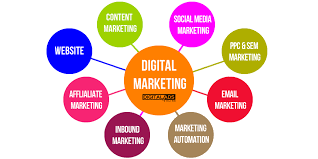Email newsletters are a powerful tool for businesses and organizations to connect with their audience. They allow you to share valuable information, promote your products or services, and build relationships with your subscribers. In this article, we’ll explore the benefits of email newsletters and provide tips on how to create effective ones.
Benefits of Email Newsletters
Build Relationships: Email newsletters allow you to keep in touch with your subscribers regularly, providing them with valuable information and insights. This helps you build trust and credibility with your audience, which can lead to increased sales and customer loyalty.
Drive Traffic: By including links to your website or blog in your newsletter, you can drive traffic to your site and increase engagement with your content.
Cost-Effective: Email newsletters are a cost-effective way to reach a large audience without spending a lot of money on advertising or marketing campaigns.
Targeted Marketing: With email newsletters, you can segment your list based on demographics or interests, allowing you to tailor your content and offers to specific groups of subscribers.
Tips for Creating Effective Email Newsletters
Define Your Audience: Before creating an email newsletter, it’s important to define who you’re targeting. Consider the demographics and interests of your subscribers when selecting topics for your newsletter.
Keep It Short & Sweet: People have short attention spans when it comes to reading emails, so keep your newsletter brief and easy-to-read. Use bullet points, headings, and images to break up the text.
Use Engaging Subject Lines: Your subject line is the first thing people see when they receive an email from you. Make sure it’s engaging enough to entice them to open it.
Provide Value: Your newsletter should provide value to your subscribers by offering helpful tips or insights related to their interests or needs.
Include Calls-to-Action (CTAs): Encourage engagement by including clear CTAs in each newsletter, such as links to your website or social media pages.
Test & Analyze: Use analytics tools to track the performance of your newsletters and make adjustments as needed. Test different subject lines, content, and CTAs to see what resonates best with your audience.
In conclusion, email newsletters are an effective way to connect with your audience and build relationships that can lead to increased sales and customer loyalty. By following these tips, you can create engaging newsletters that provide value to your subscribers and help you achieve your marketing goals.
Answering Your Top 7 Questions About Email Newsletters
- What are the benefits of email newsletter?
- Are newsletters still relevant 2022?
- How do I create an email newsletter?
- Are email newsletters still effective?
- How do you start an email newsletter?
- What is the main purpose of an email newsletter?
- What are the three types of newsletters?
What are the benefits of email newsletter?
Email newsletters have several benefits for businesses and organizations, including:
- Building relationships: Email newsletters allow you to stay in touch with your subscribers regularly, providing them with valuable information and insights. This helps you build trust and credibility with your audience, which can lead to increased sales and customer loyalty.
- Driving traffic: By including links to your website or blog in your newsletter, you can drive traffic to your site and increase engagement with your content.
- Cost-effectiveness: Email newsletters are a cost-effective way to reach a large audience without spending a lot of money on advertising or marketing campaigns.
- Targeted marketing: With email newsletters, you can segment your list based on demographics or interests, allowing you to tailor your content and offers to specific groups of subscribers.
- Measurable results: Email newsletters are trackable, allowing you to see how many people opened the email, clicked on links, and took action. This data can help you refine your strategy for future campaigns.
Overall, email newsletters are a powerful tool for businesses looking to connect with their audience and achieve their marketing goals.
Are newsletters still relevant 2022?
Yes, newsletters are still relevant in 2022. In fact, they remain one of the most effective ways for businesses and organizations to connect with their audience and build relationships. Despite the rise of social media and other digital marketing channels, email remains a popular and reliable method of communication.
One of the reasons newsletters remain relevant is that they provide a direct line of communication between businesses and their subscribers. Unlike social media or other platforms where algorithms can limit reach, email newsletters are delivered directly to subscribers’ inboxes. This allows businesses to ensure their message is received by their target audience.
Additionally, newsletters allow businesses to segment their audience based on demographics or interests, allowing them to tailor their content and offers to specific groups of subscribers. This targeted approach can lead to higher engagement rates and increased conversions.
Another reason why newsletters remain relevant is that they are cost-effective compared to other marketing channels. While social media advertising or influencer marketing can be expensive, sending out a newsletter is relatively inexpensive and can reach a large audience.
In conclusion, despite the ever-changing landscape of digital marketing, newsletters remain a relevant and effective way for businesses and organizations to connect with their audience. By following best practices for creating engaging content and targeting specific groups of subscribers, businesses can continue to use newsletters as a valuable tool for building relationships with their customers in 2022 and beyond.
How do I create an email newsletter?
Creating an email newsletter may seem daunting, but with the right tools and strategies, it can be a straightforward process. Here are the steps to create an email newsletter:
- Define your audience: Before creating your newsletter, you need to know who you’re targeting. Identify your audience’s demographics and interests to tailor your content accordingly.
- Choose an email marketing service: There are various email marketing services available, such as Mailchimp, Constant Contact, and Campaign Monitor. Choose one that fits your needs and budget.
- Select a template: Most email marketing services offer pre-designed templates that you can customize with your branding and content.
- Create engaging content: Your newsletter should provide value to your subscribers by offering helpful tips or insights related to their interests or needs. Use a mix of text, images, and videos to make it visually appealing.
- Include CTAs: Encourage engagement by including clear calls-to-action in each newsletter, such as links to your website or social media pages.
- Test & analyze: Use analytics tools to track the performance of your newsletters and make adjustments as needed. Test different subject lines, content, and CTAs to see what resonates best with your audience.
- Send & schedule: Once you’ve created your newsletter, send it out to your subscribers or schedule it for a later date/time.
By following these steps, you can create an effective email newsletter that engages with your audience and helps achieve your marketing goals.
Are email newsletters still effective?
Yes, email newsletters are still effective in today’s digital age. In fact, they remain one of the most powerful tools for businesses and organizations to connect with their audience. Here are some reasons why:
Direct Communication: Email newsletters allow you to communicate directly with your subscribers. Unlike social media or other marketing channels, you own your email list and have complete control over the content and messaging.
Targeted Marketing: With email newsletters, you can segment your list based on demographics or interests, allowing you to tailor your content and offers to specific groups of subscribers. This targeted approach results in higher engagement and conversion rates.
Cost-Effective: Email newsletters are a cost-effective way to reach a large audience without spending a lot of money on advertising or marketing campaigns.
Measurable Results: With analytics tools, you can track the performance of your newsletters and make adjustments as needed. This allows you to see what’s working and what’s not, so you can optimize your campaigns for better results.
It’s important to note that while email newsletters are still effective, they need to be done right in order to be successful. This means providing value to your subscribers by offering helpful tips or insights related to their interests or needs, keeping the content brief and easy-to-read, using engaging subject lines that entice people to open the email, including clear CTAs that encourage engagement, and testing different approaches to see what works best.
In conclusion, email newsletters remain a valuable tool for businesses and organizations looking to connect with their audience in a direct and targeted way. By following best practices and providing value to your subscribers, you can create effective email campaigns that drive engagement and achieve your marketing goals.
How do you start an email newsletter?
Starting an email newsletter can seem daunting, but it’s actually quite simple. Here are the basic steps to get started:
- Choose an email marketing service: There are many email marketing services available, such as Mailchimp, Constant Contact, and AWeber. Choose one that fits your needs and budget.
- Build your email list: Start collecting email addresses from people who are interested in receiving your newsletter. You can do this by adding a sign-up form to your website or social media pages.
- Define your audience: Determine who you want to target with your newsletter and what topics will interest them.
- Develop a content strategy: Decide on the frequency of your newsletter (weekly, bi-weekly, monthly) and create a content plan for each issue.
- Create a template: Use the design tools provided by your email marketing service to create a professional-looking template for your newsletter.
- Write and format content: Write engaging content that provides value to your subscribers and format it in a way that is easy to read.
- Test and send: Before sending out your first newsletter, test it thoroughly to make sure everything looks good and works properly. Then hit send!
Remember, consistency is key when it comes to email newsletters. Stick to a regular schedule and provide valuable content that keeps your subscribers engaged and interested in what you have to say.
What is the main purpose of an email newsletter?
The main purpose of an email newsletter is to provide valuable and relevant information to a subscribed audience. It is a tool used by businesses and organizations to keep their subscribers informed about their products, services, industry news, or any other relevant information. Email newsletters are also used to build relationships with subscribers by providing them with helpful insights and tips, which can increase customer loyalty and engagement. Additionally, email newsletters can be used to drive traffic to a website or blog, promote products or services, and generate leads for sales.
What are the three types of newsletters?
The three types of newsletters are:
Company Newsletter: A company newsletter is an internal communication tool that is used to keep employees informed about the latest news, events, and updates related to the company. It can include information about new hires, promotions, and upcoming projects or events.
Promotional Newsletter: A promotional newsletter is used to promote products or services to customers or clients. It can include information about new products, special offers, and discounts.
3. Content Newsletter: A content newsletter is focused on providing valuable information to subscribers. It can include articles, blog posts, videos, and other types of content that are relevant and interesting to the target audience. The goal of a content newsletter is to establish the sender as an authority in their field and build trust with subscribers.



